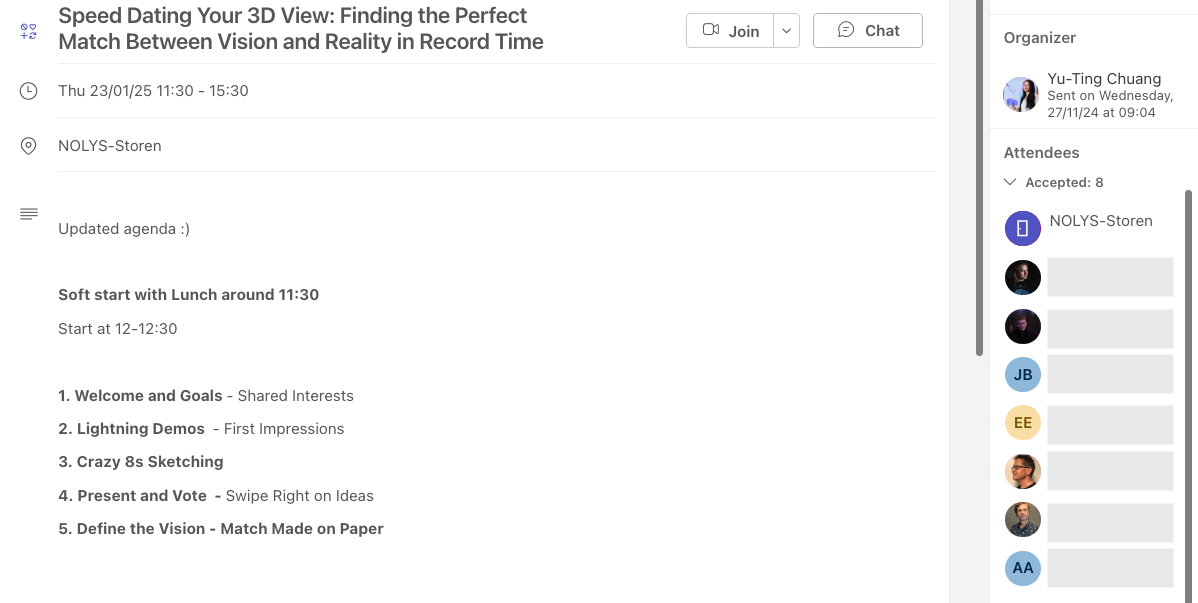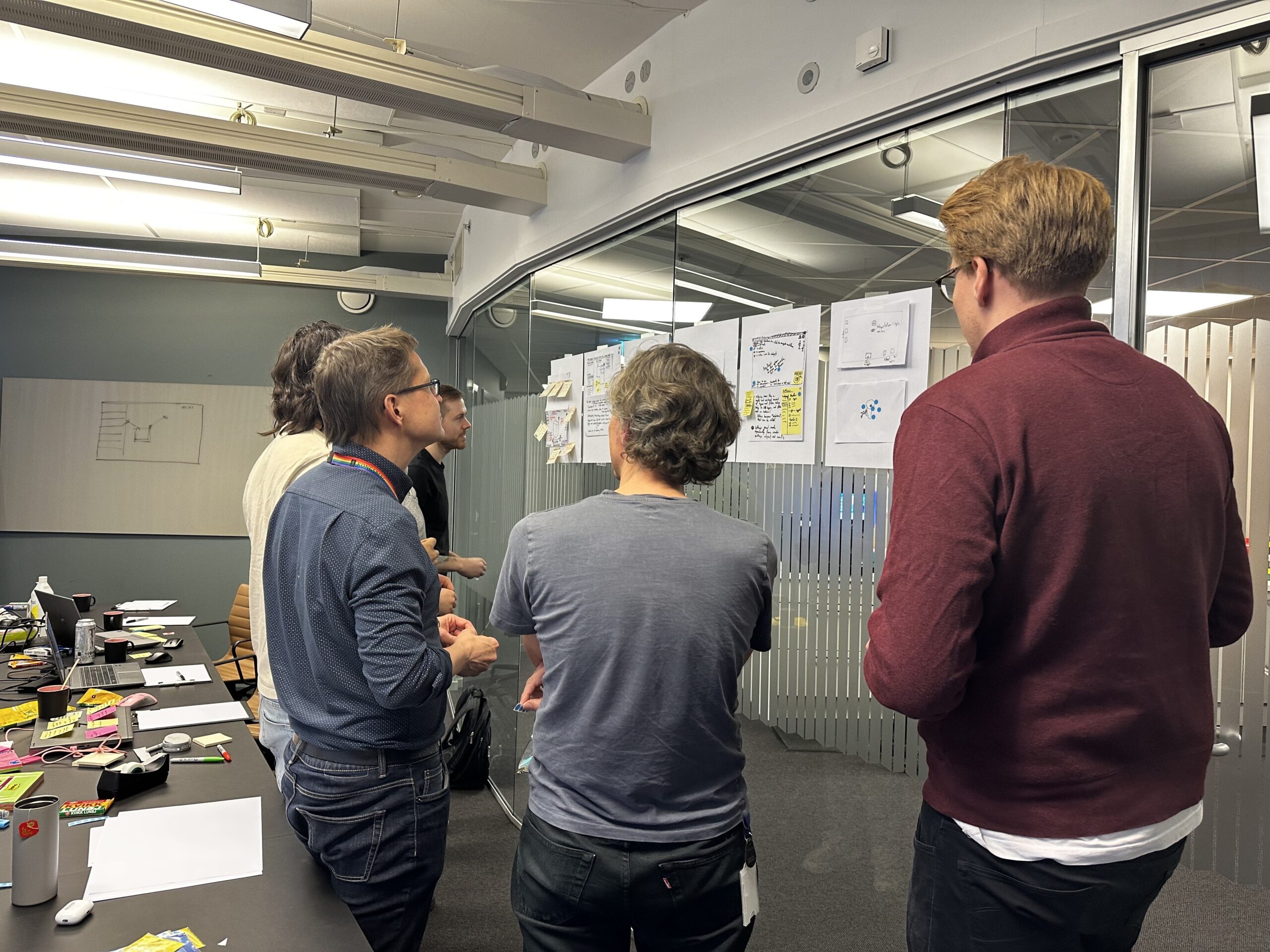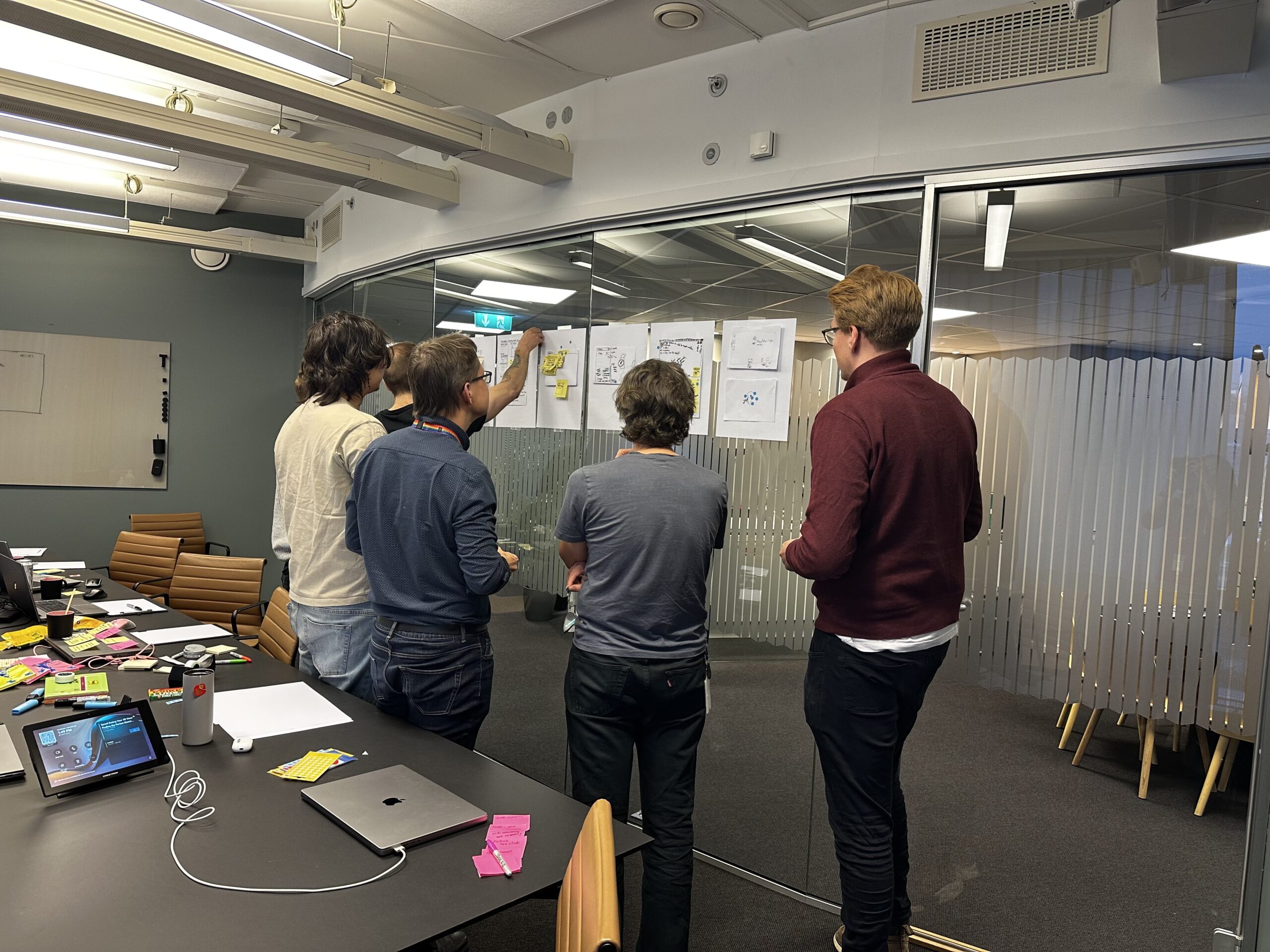The Why
This workshop was part of a larger UX discovery effort — 3D Environment Findings and Recommendations (Read case study here), specifically Step 4: Workshop with 3D VisionType.
After reviewing client feedback and identifying key design opportunities, it became clear that incremental UI tweaks wouldn’t solve the real challenge. We needed a dedicated space to think boldly — to explore how the 3D environment could evolve beyond its current form.
User insights revealed that while the 3D View was powerful, it often felt cluttered and inconsistent. Product conversations, meanwhile, tended to focus on short-term fixes rather than a long-term vision.
The team needed alignment — a creative yet structured setting to define what “better” truly looked like. That’s why I designed a half-day exploration sprint, inspired by the AJ&Smart Design Sprint framework.
The goal was simple but ambitious:
To reimagine how users interact with the 3D environment and define a shared vision for its next evolution — visually, functionally, and experientially.
This sprint became the bridge between discovery and direction — balancing open exploration with focused collaboration, and giving every voice in the room a chance to shape the future of 3D View.
Workshop Agenda
Date & Time: Thursday, 23 January 2025 | 11:30–15:30
Soft Start: Lunch and informal catch-up from 11:30
Workshop Start: 12:00–12:30
Location: Lysaker office
8 participants
Agenda:
1. Welcome & Goals — Shared Interests
Set the tone and clarify why we’re here.
2. Lightning Demos — First Impressions
Explore inspiring 3D environments and discuss what works well.
3. Crazy 8s Sketching
Generate rapid ideas and push beyond the obvious.
4. Present & Vote — Swipe Right on Ideas
Share concepts, dot-vote, and build alignment on promising directions.
5. Define the Vision — Match Made on Paper
Consolidate insights into a shared direction for the next design iteration.
Homework: “Show and Tell — Finding 3D Gems”
Objective:
- Find an example of a digital 3D environment with great interactions that inspire you.
Instructions:
- Search for any digital 3D environment — apps, games, tools, or websites — with intuitive, visually appealing, or innovative interactions.
- Be ready to explain why you chose it and what makes it stand out (e.g., smooth navigation, clear controls, engaging visuals).
How the Session Unfolded
1. Welcome & Goals — Shared Interests
We started the afternoon with lunch at 11:30 — a soft, friendly kickoff before diving into work.
While everyone settled in with food and conversation, I used the time to remind the group why we were here: to think beyond bug fixes and spark a shared vision for the 3D View experience.
Once we officially started, I gave a short introduction:
“Today isn’t about finding the right answer. It’s about finding the right direction — together.”
I walked the team through the workshop goals, the timebox for each phase, and a few ground rules: stay visual, build on each other’s ideas, and suspend the urge to judge too soon.
2. Lightning Demos — First Impressions
We kicked off with inspiration.
Each participant presented a 3D experience they found engaging or intuitive — ranging from industrial tools like Cognite Data Fusion, to immersive games like Subnautica and Satisfactory, and even architectural tools like Twinmotion.
As each demo played, I asked:
“What makes this experience feel clear or effortless?”
The discussion was lively. One engineer pointed out how Subnautica gives instant feedback for every action — something we could translate into 3D View’s interaction model.
Another colleague noted how Twinmotion’s minimal UI allowed the 3D space to breathe.
By the end of this segment, we’d collected over a dozen “inspiration nuggets” pinned on the board — everything from visual feedback cues to adaptive camera behavior.
3. Crazy 8s — Sketching Ideas Quickly
Next came the Crazy 8s challenge — eight minutes, eight sketches. The room got quiet as everyone bent over paper, sketching interactions, tools, and interface layouts.
I walked around, quietly checking the clock and encouraging momentum:
“Don’t overthink it — rough is perfect.”
Some sketches were abstract (“gesture controls in 3D”), others surprisingly detailed (“context menu triggered on object hover”).
After eight minutes, we did a short gallery walk — taping sketches on the wall and letting everyone silently absorb the diversity of ideas.
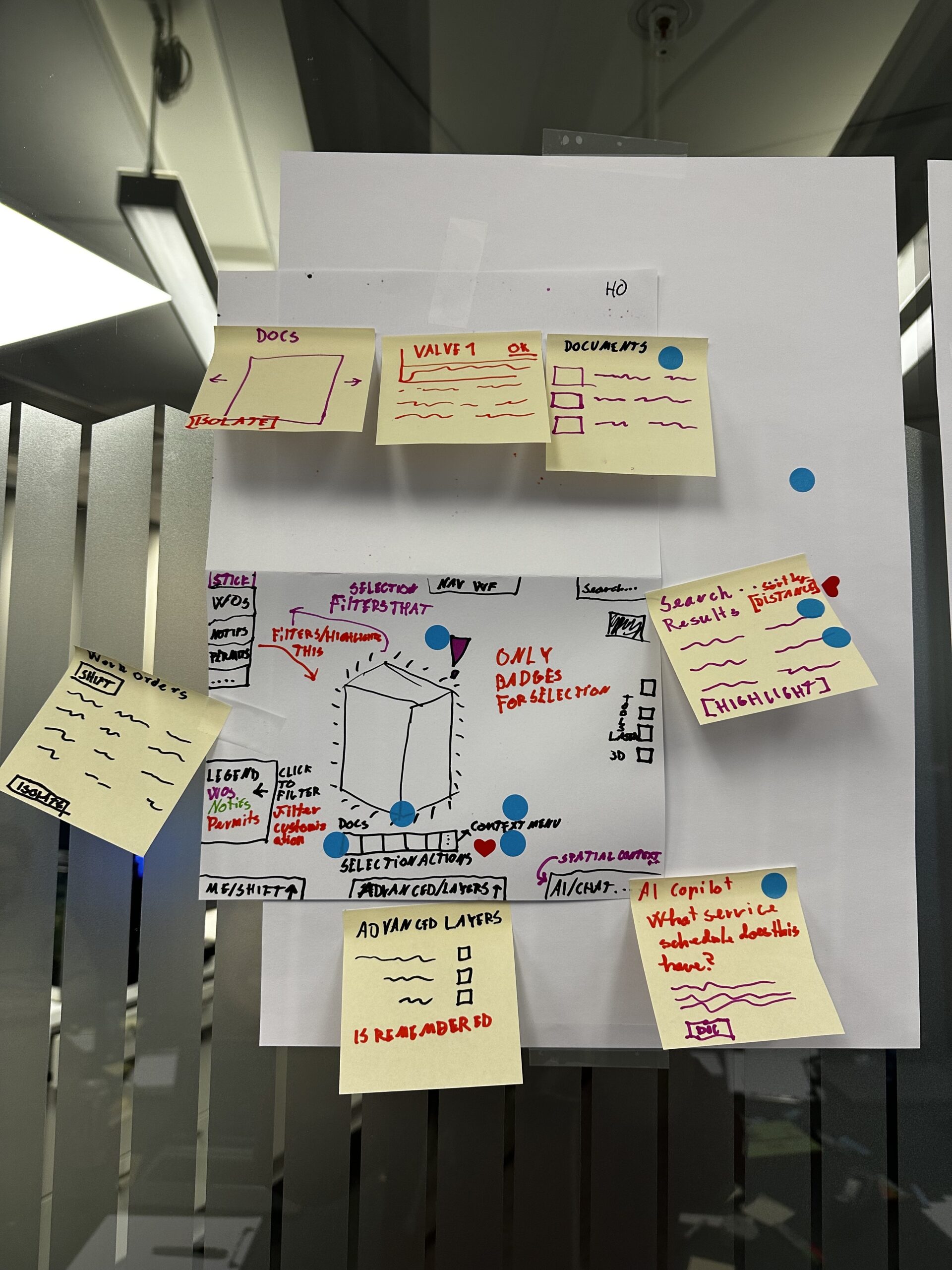
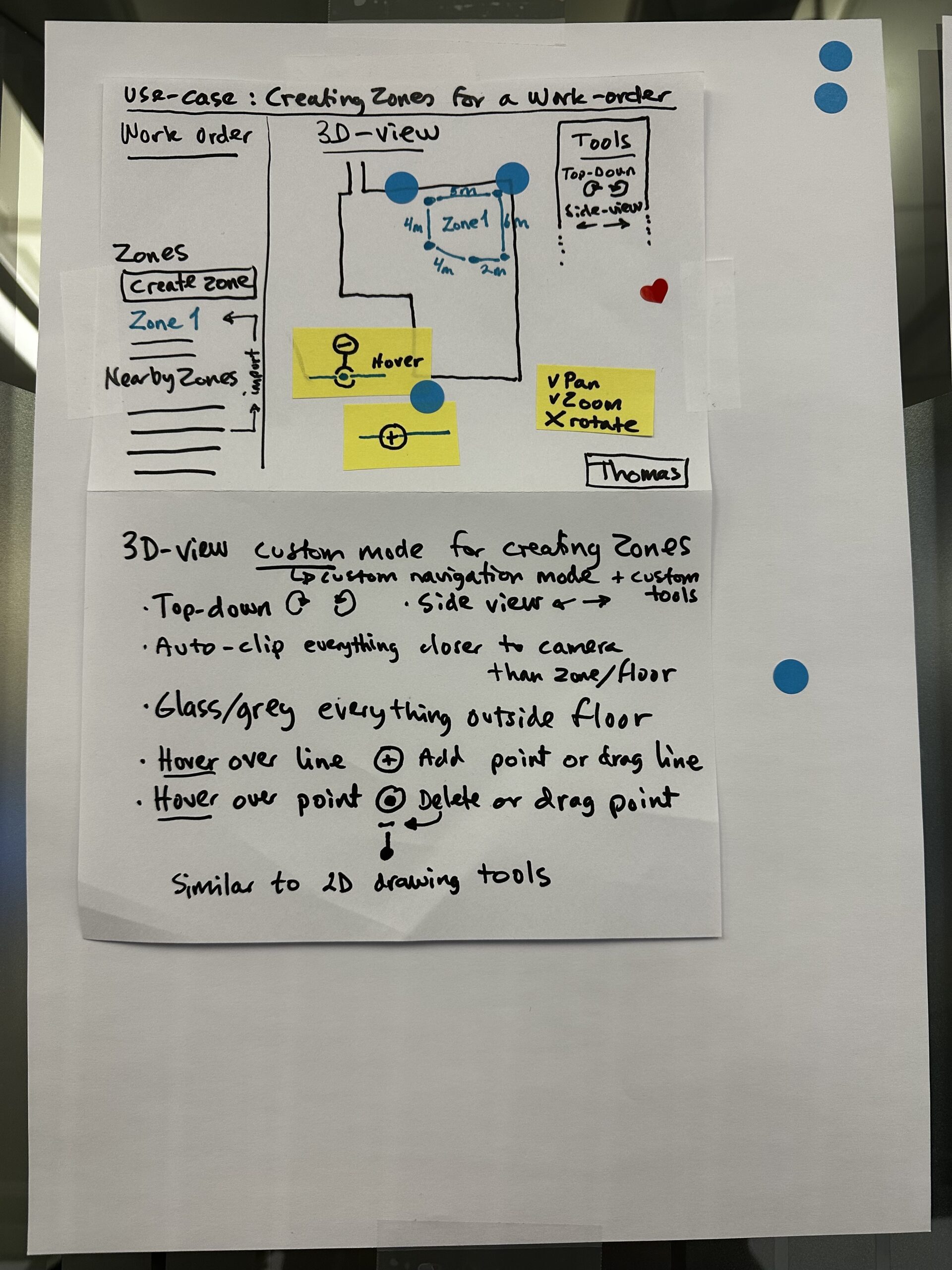
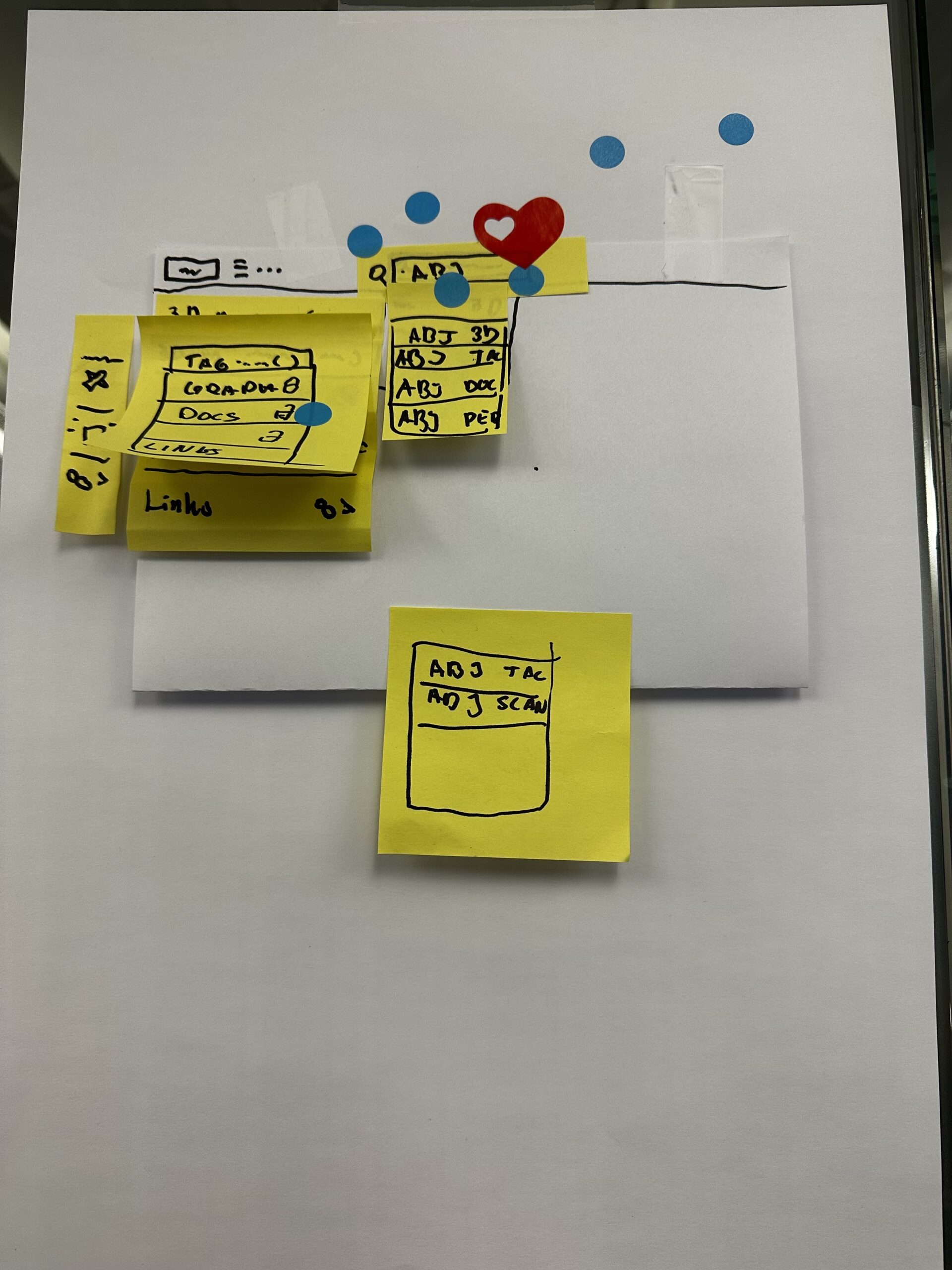
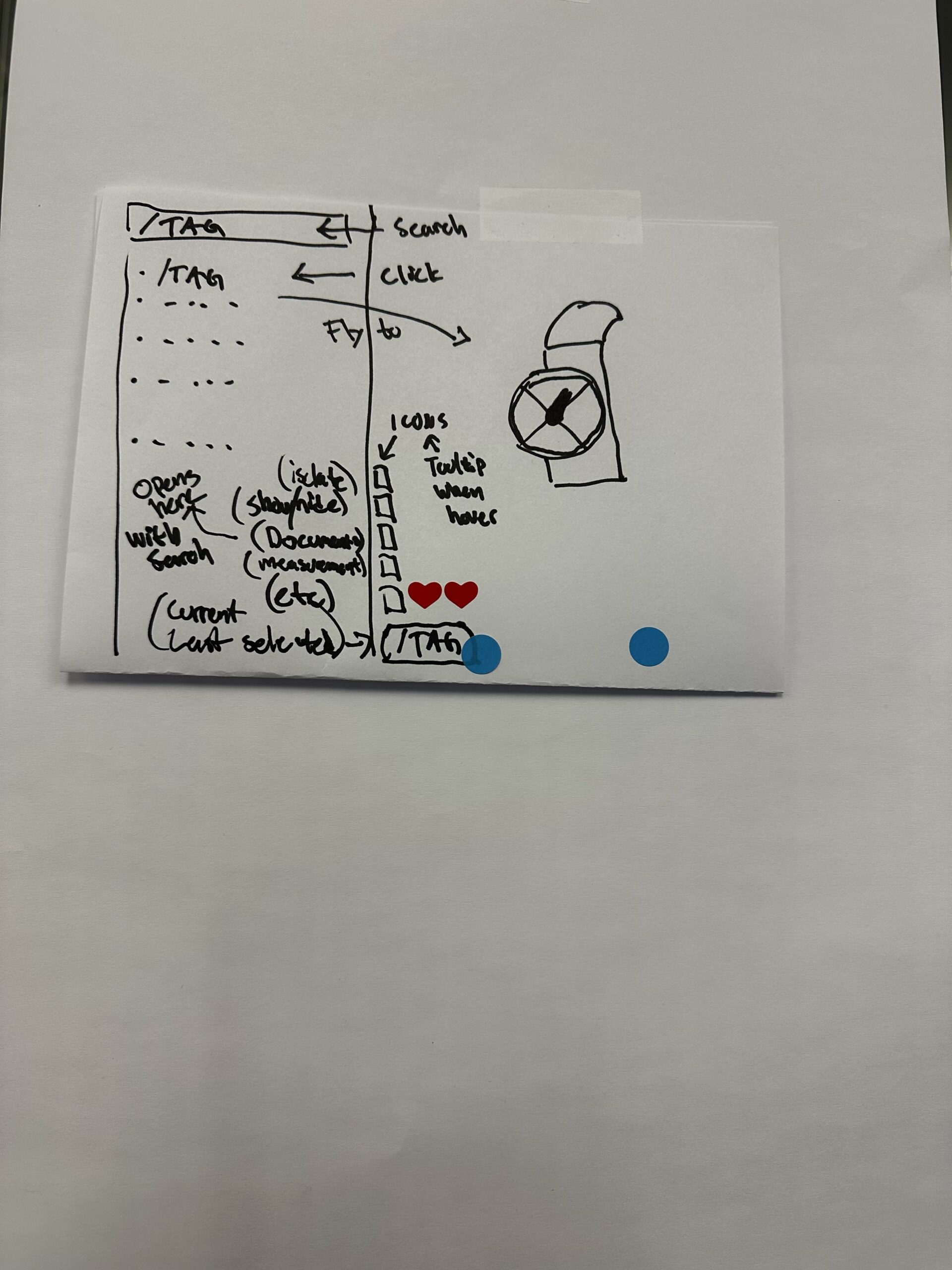
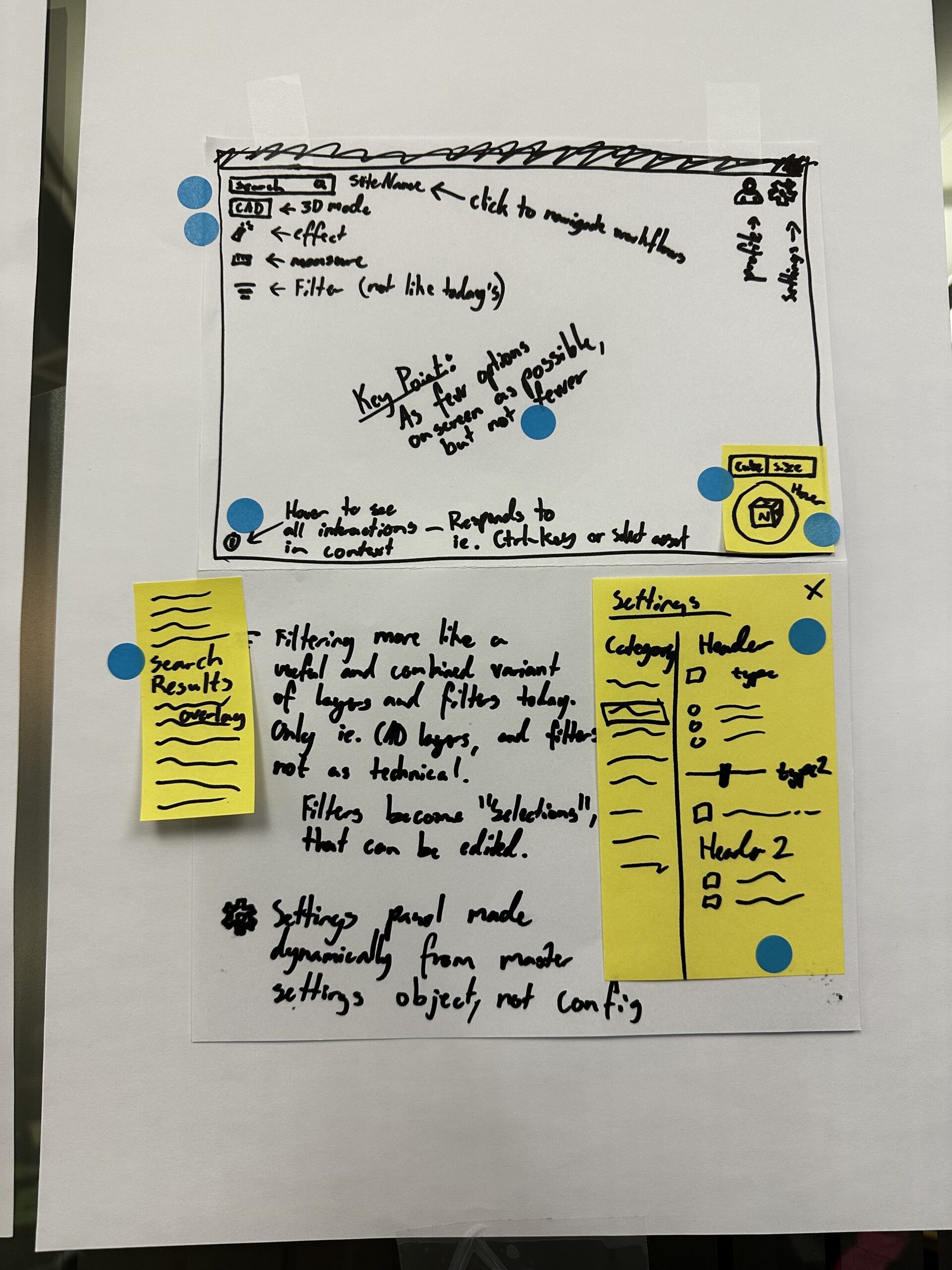
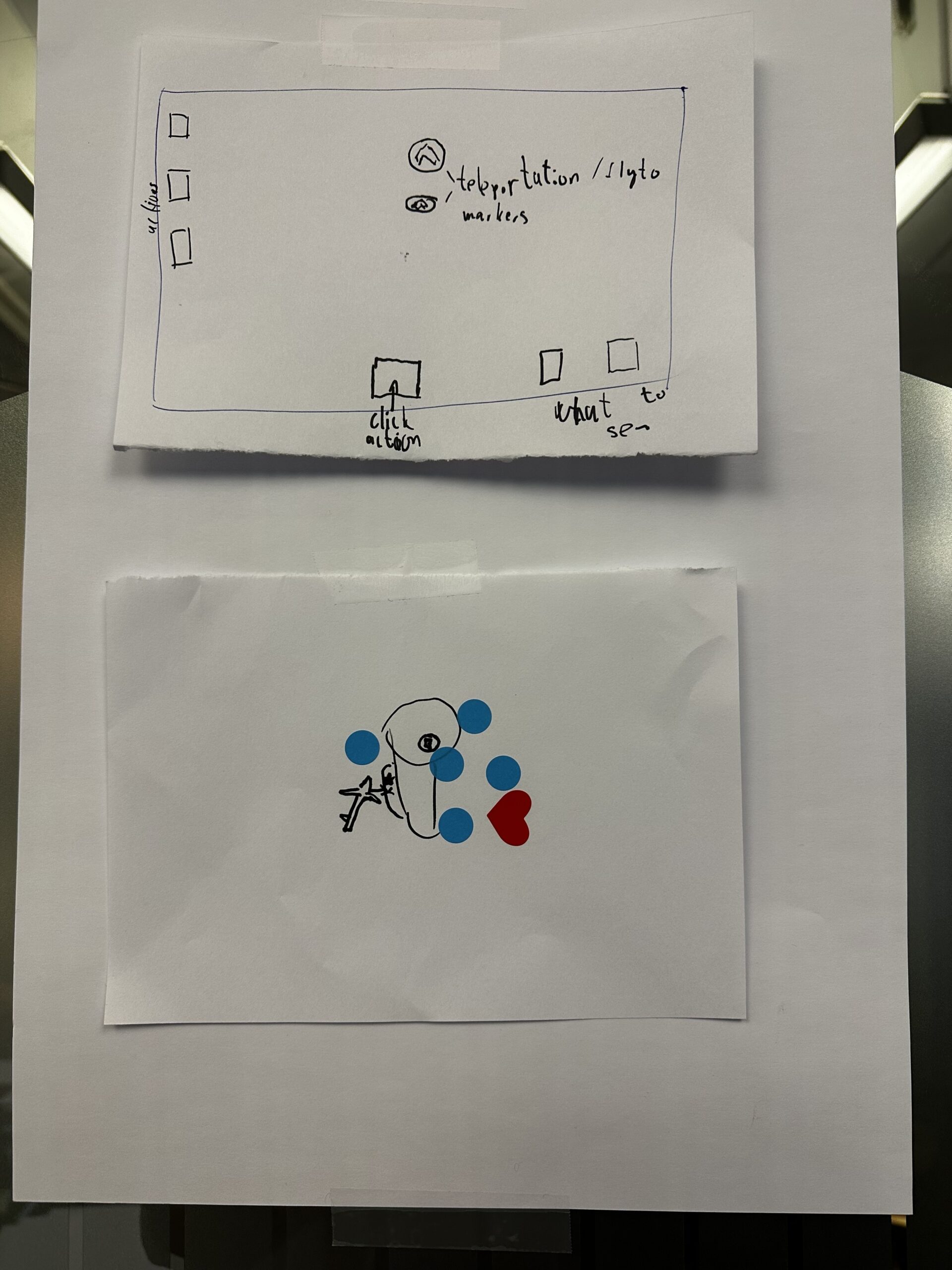
4. Present & Vote — Swipe Right on Ideas
This is where energy really picked up. Each participant took 2–3 minutes to present their favorite sketches — explaining the user problem it solved and why it mattered.
We used dot voting to highlight ideas that resonated most.
Colored dots filled the wall — a clear reflection of collective priorities:
-
Contextual actions within the 3D scene
-
Search embedded directly in 3D
-
Clearer visual feedback on object selection
-
Simplified layout and adaptive panels
I then gave everyone a final “heart vote” — one special sticker to mark the idea they were personally most excited to explore.
It created a nice emotional touchpoint — a sense of shared ownership.
5. Define the Vision — Match Made on Paper
The final step was to synthesize everything. We grouped similar ideas, connected related themes, and began mapping what the next version of 3D View could look like.
Participant A proposed improving cross-view consistency — “Users shouldn’t have to relearn basic interactions.”
Participant B suggested contextual layers that adapt based on user focus.
Participant C emphasized visual hierarchy, while Jesper focused on discoverability through search-in-3D.
By this point, I shifted from facilitator to sense-maker — listening, clustering, and helping the group see patterns emerge. We stepped back from the wall and suddenly everyone could see the future — not as a list of features, but as a shared direction.
We closed the session by revisiting the goal written on the board:
To reimagine how users interact with the 3D environment.
This time, it no longer felt abstract — it felt achievable.
In this phase, the room came alive with debate, laughter, and creative energy. Participants — A, B, C, D, E, F, and G — built upon each other’s ideas. Some reimagined interaction modes; others refined the feel of camera transitions or contextual layers. We didn’t aim for a perfect design — we aimed for a shared direction. And that’s exactly what we achieved.
Facilitation isn’t about leading ideas — it’s about creating the conditions where ideas lead themselves.
Outcomes
By the end of the day, we translated individual sketches into an aligned prototype roadmap:
- Search inside 3D
- Contextual action items
- Zone creation
- Action visual guide and feedback
Each of these features became part of our product backlog and influenced ongoing design iterations.
But beyond deliverables, the workshop restored team energy, trust, and clarity.
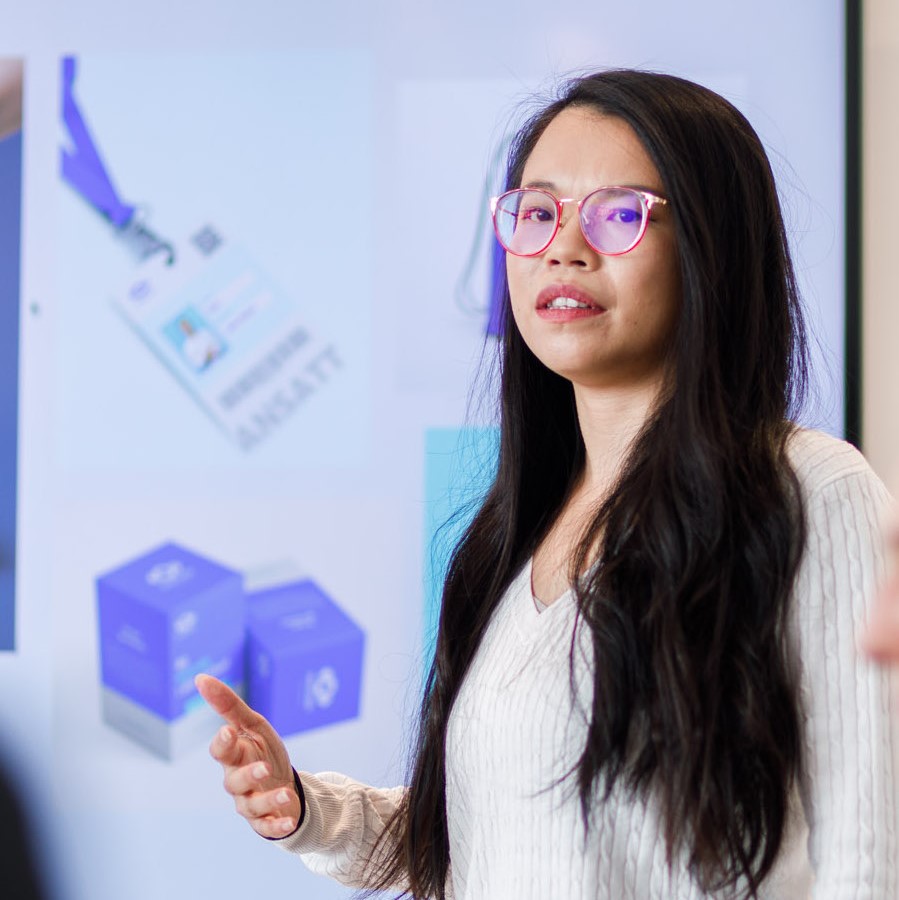
Reflection
Running this sprint reminded me how structure unlocks creativity.
When people know the boundaries, they feel free to explore within them.
My role wasn’t to produce ideas — it was to keep energy balanced, time managed, and outcomes tangible.
The true success wasn’t measured by how many sketches we produced, but by how aligned we became.
That alignment later helped our product roadmap evolve faster and with fewer debates.
As AJ&Smart Jonathan Courtney says: The best workshops don’t just generate ideas — they build understanding.
Key Takeaways
- Facilitation is design ! it’s designing the conversation, not just the product.
- Creative structure creates safe space for innovation.
- Alignment is the foundation of velocity.
The 3D View sprint was more than a workshop — it was a reset. A reminder that when you bring people together around vision, clarity follows naturally
See. Manage. Act — Seamlessly, Anywhere.
That’s not just our product vision — it’s the mindset this workshop helped us rebuild.
Building the foundation: twin view system design document (SDD)
Product discovery: what-if scenarios for smarter decisions in digital twin
Designing for millions: Product Research on Taiwan’s NHI (National Health Insurance)App
(47) 41 33 16 51
Reach Me By Phone
contact@yutingchuang.com
Email Me
Rølivegen 367, Steinkjer, 7718, Trøndelag
📍 Based in Norway

